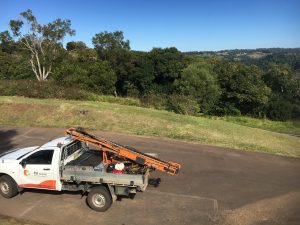Drilling is an important and necessary part of soil sampling in order to provide information regarding the characteristics of the sub-soil structure. This will provide the design engineer valuable foundation information in order to design the footings for a new structure. Drilling rigs come in various sizes. Large drilling rigs are occasionally used if deeper drilling or penetration through rock is required. But due to the higher expense and the need to be as economical as possible, small-diameter drilling rigs are used to allow the Soil Tester to examine soil or rock fragments from the drilling operation, to retrieve soil samples at depth, and to perform in-place soil tests. These are perfectly fine in most cases for small to medium structures.
.
The most common type of drill used for sampling is the Continuous Flight Auger. This is a method of sampling using an auger as a corkscrew. The auger is screwed into the ground and the soil winds up the flights to the surface, then the augers are lifted out. Soil is retained on the blades of the auger and kept for testing. There are other methods of sampling via the borehole. One is the use of a steel tube that is driven into the clay at the bottom of the borehole and enables a solid sample to be withdrawn.
The drilling machine that we use is hydraulicly operated. We have a drill rig mounted on the tray of a Mazda BT50 4wd. This is used where reasonable access is possible.